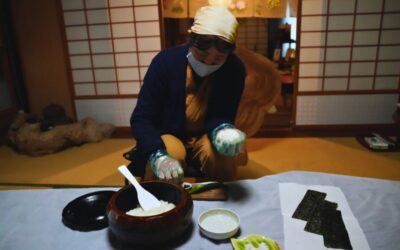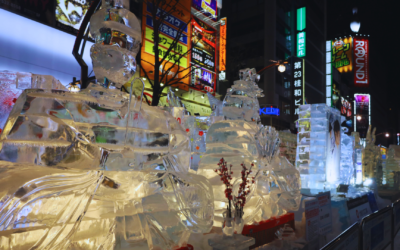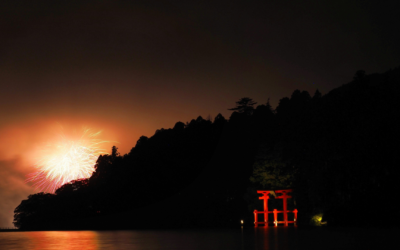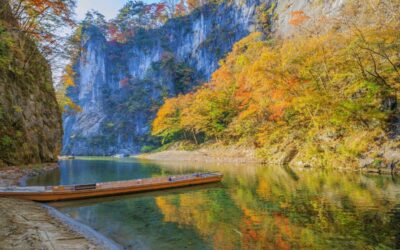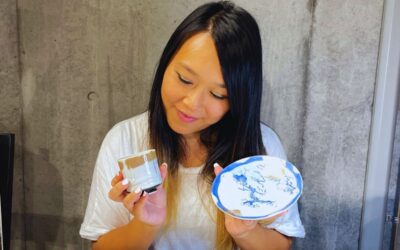Whenever you think of Kyoto, we know that the thousand gate corridor image pops into your head, how could it not? It’s by far one of the most iconic spots in Kyoto, it’s open 24 hours, and there’s no entrance fee!
Visiting Kyoto and skipping Fushimi Inari Taisha equals depriving yourself of one of the most gorgeous Shinto Shrines the ancient capital of Japan has to offer, so you should definitely visit! But since it is such a big area, with so much to see, we want to make sure you can get the most out of it.
The Shrine and Its Purpose
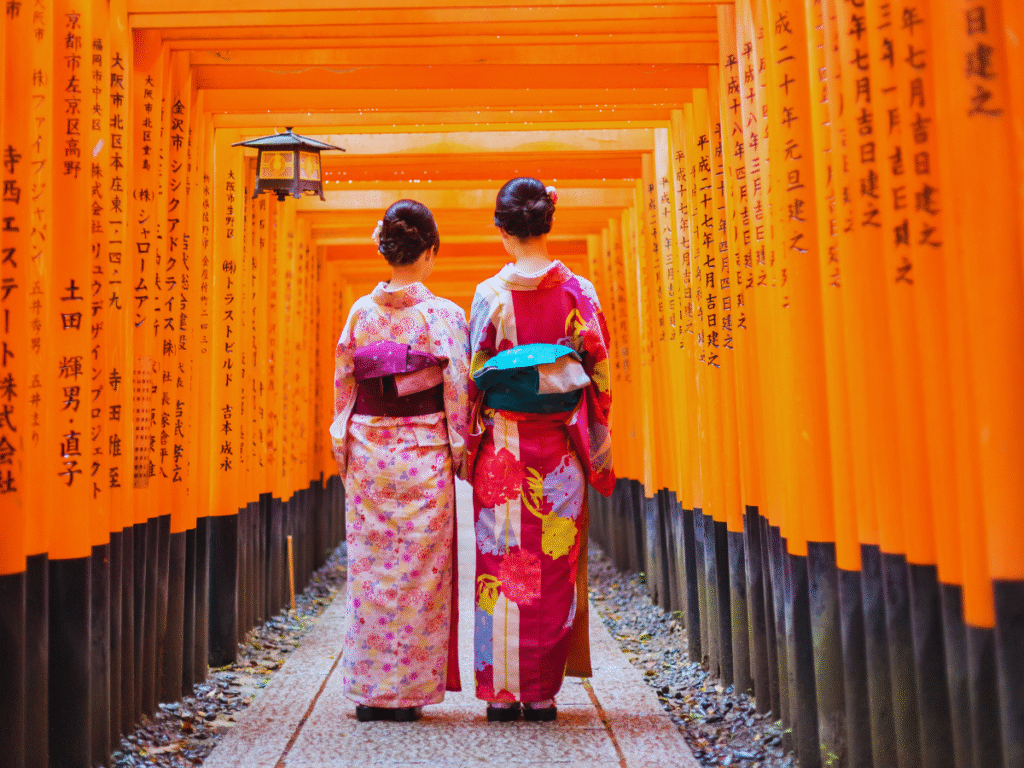
Fushimi Inari Taisha is dedicated to Inari Ōkami, the Shinto deity of rice, agriculture, prosperity, and business. Traditionally, Inari was venerated by farmers praying for abundant harvests, but over time, the deity also became widely worshipped by merchants and entrepreneurs seeking success and good fortune in their ventures.
Today, Fushimi Inari remains a vibrant spiritual hub where people come not only to admire the beauty but also to pray for good luck, protection, and success in both personal and professional life. You will find rice in patterns, donations and decorations all around the shrine, a reminder of the original purpose of this spiritual site.
When to Visit

First things first, when should you visit the Shine? This highly depends on what sort of vibe you want to experience, because Daytime Fushimi and Nighttime Fushimi are two very different things. Our answer is daytime Fushimi Inari, since it’s where you can get the best views, but we will share some information about Nighttime Fushimi too at the end of this post.
Going to Fushimi Inari in the daytime means being able to visit Shrine shops where you can get beautiful and sacred items of protection for yourself or as souvenirs. These items are called omamori and look great attached to your bags and purses. They come for all kinds of purposes: matchmaking, money, work, school, household safety, and others.
If you’re collecting Goshuin, the sacred stamps, then you can also get those, and of course, don’t forget the Omikuji, your written oracle that will tell you how your luck is looking, together with some poetic and often mysterious life advice.
There’s also the Insta-famous Torii-shaped Ema. Ema are votive tablets, where you write a wish and then hang it on the shrine grounds for it to come true. But this specific Ema goes a step further: It can be taken home!
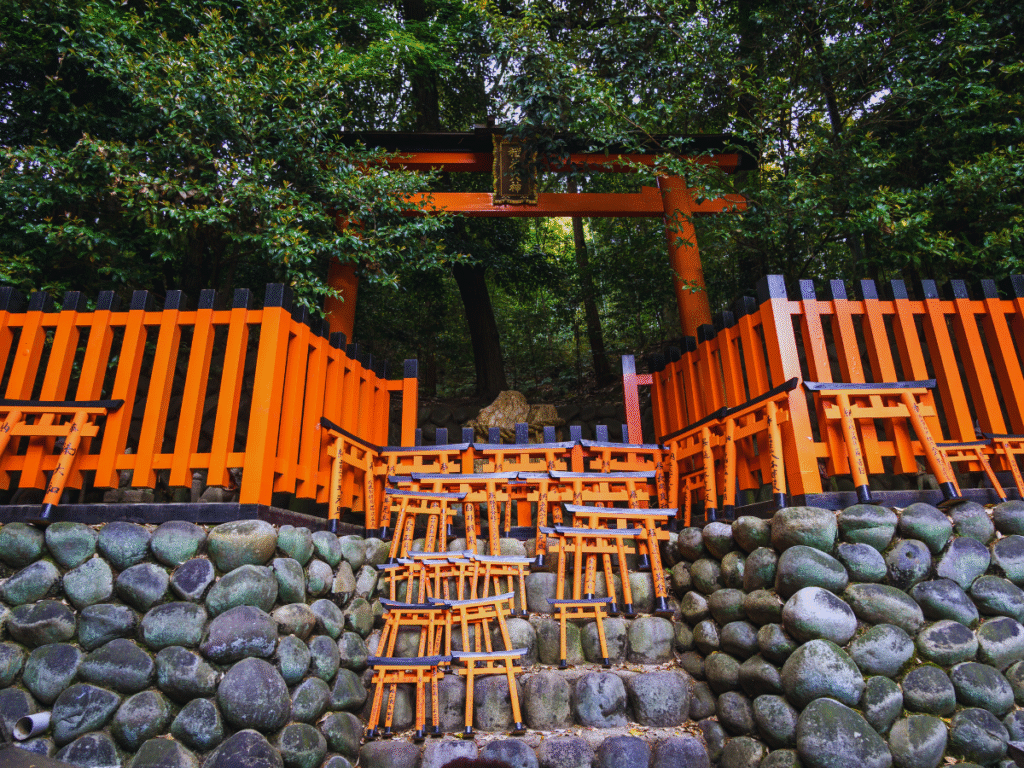
Typically, ema, as sacred items that will be burned in a ritual held at the shrine, are meant to stay there and should not be taken home, but these ones are an exception. So if you want to take it home or gift it to someone, you can. All of these are items that you can only get while the shops are open, so if you’re planning on getting them, you should visit during opening hours, which are from 9 AM to 5 PM.
If you’re planning on hiking most of the path, it’s also important to keep in mind that the snack shops and small cafes you’ll find on your way up close later in the day. If you don’t want to prepare snacks, make sure you check the working hours of these, as you’ll need some food to keep going! For water, there are vending machines all the way up and at the top, so as long as you have cash on you, you can keep hydrated!
Hiking Mount Inari
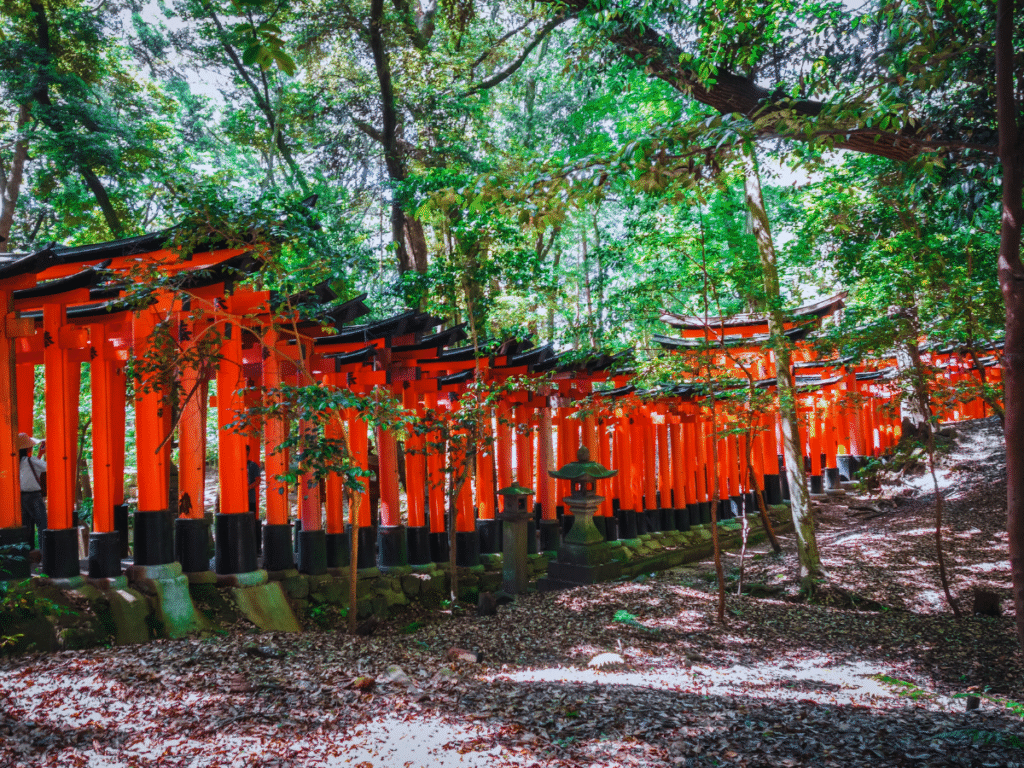
One of the questions we get the most is if it’s worth it to climb Mt Inari all the way to the top. The answer to this depends on what motivates you. If you’re looking for a breathtaking view of Kyoto once you reach the summit, then the answer is no, but if you want to get some cardio and leg workout done, then yes!
The top of the mountain does not have an exclusive shrine or monument for you to behold; it’s a modest summit decorated with many statues but nothing you won’t see on the way up. If you don’t want to exhaust your legs, we suggest you go up to Kumataka Shrine and then start heading down.
If you want to challenge yourself and go the way up, the full course will take around 2 hours to the top and one hour to come down if you do it at a faster pace, but most people take their time coming down because their legs will be quite tired by then. If you really want to see a nice view of the city, you can hike up to the Crossroads Observatory about halfway up, where a small clearing offers panoramic views over Kyoto.
What you can expect as you go up is fewer people—since most visitors do not go all the way up—some cosy coffee shops, and many Torii gates! If you are looking for a perfect picture with no one else around, we suggest you go further into the climb. That way, you will be able to get perfect shots.
The Torii Gates and the Foxes
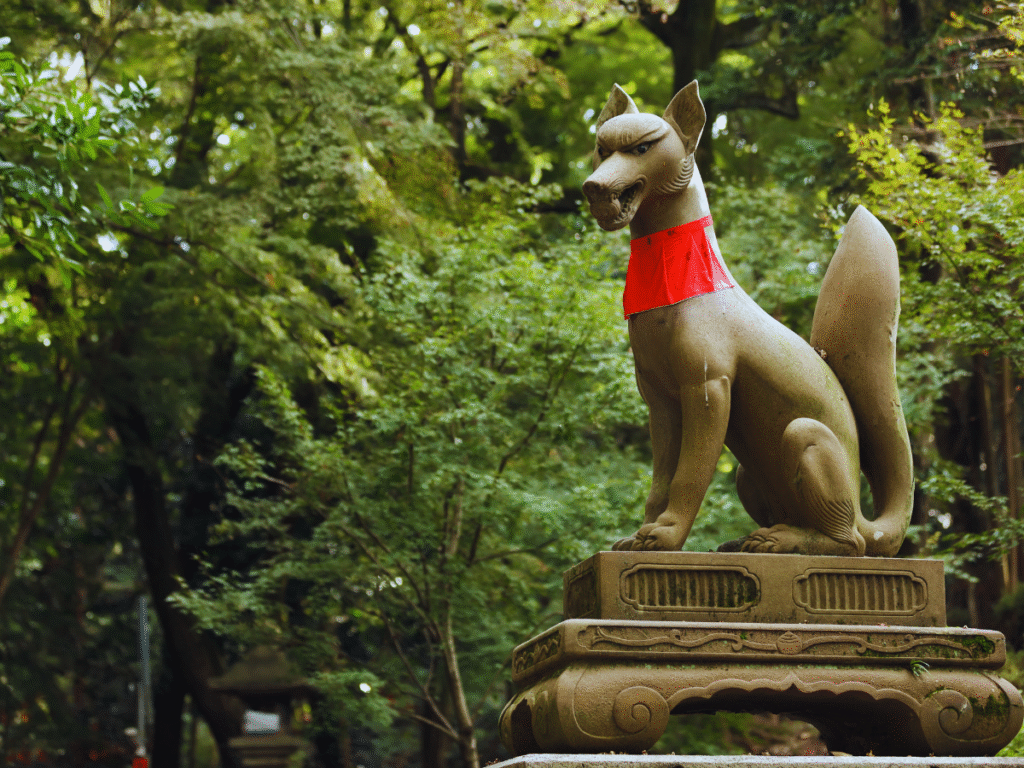
Everyone wants to take pictures with the torii gates, but before you do that, you should know what they are and why they’re there.
Each torii gate comes from a donation, usually by businesses or individuals giving thanks to Inari. If you look closely, you’ll see the donor names and dates inscribed on the back of each gate. These might be tricky to read since they’re mostly in Japanese, but if you point Google Translate at them, you will see who made the donation and when. Some are decades old, others are much newer, and some are made of stone and are more than 100 years old. But together, they create a rhythmic procession, like walking through a thousand whispered prayers.

It’s both meditative and moving, and easy to lose track of time. These torii are made of wood, so they can get worn out with time and the weather, so it’s important that you avoid touching them; after all, they’re someone else’s proof of donation!
Fushimi Inari Taisha is also known as the fox shrine, and once you step inside its grounds, you will know why. There are so many fox statues and fox-themed things! Many think that this is because Inari Sama was a shapeshifter; but in fact, he was just a really big fan of foxes, and kept them as his messengers. These foxes are not just part of the shrine but also appear in many souvenir shops in the form of keychains, t-shirts, and anything you can think of!
Our Suggested Route
There are many ways to enjoy the beauty of Fushimi Inari. If you’re looking to learn all there is about this Shinto Shrine, consider booking a tour with Flip. Our guides will take you through the torii corridors, and share all there is to know about this sacred place—all while taking amazing pictures of you and the torii.
If you would rather take your time and venture through this mystical climb on your own, here is our suggested route that should take you about two hours:
Main Shrine

First, make sure you check the main shrine area, which will be the first thing you see after you cross the main entrance gate. Here, you will see where most people come to pray and offer their respect to Inari Sama. This is also where most of the sacred item shops are.
You might be right on time to witness some rituals of prayer held by the priests, or even some musical performances that are part of rituals held by the shrine maidens. None of these can be photographed or recorded, which only makes them more special since they will surely linger in your memories.
If you want to stock up on any of the protection charms, we suggest you do it on the way out, since you will be visiting another smaller shrine ahead with more of these items in different designs.
Thousand Gate Corridor

Then you can head to the main attraction, the thousand-gate corridor. Here you will likely get an urge to stop and take pictures right as you walk in, but if you’re looking for some decent angles and less crowded shots, we strongly suggest you do not stop here for the pictures, as they will not come out the way you want, and you will also be worsening traffic.
This corridor will connect most of the Shrines you will see as you keep moving forward, so rest assured that you will get many chances for pictures as you go up.
Okusha Shrine
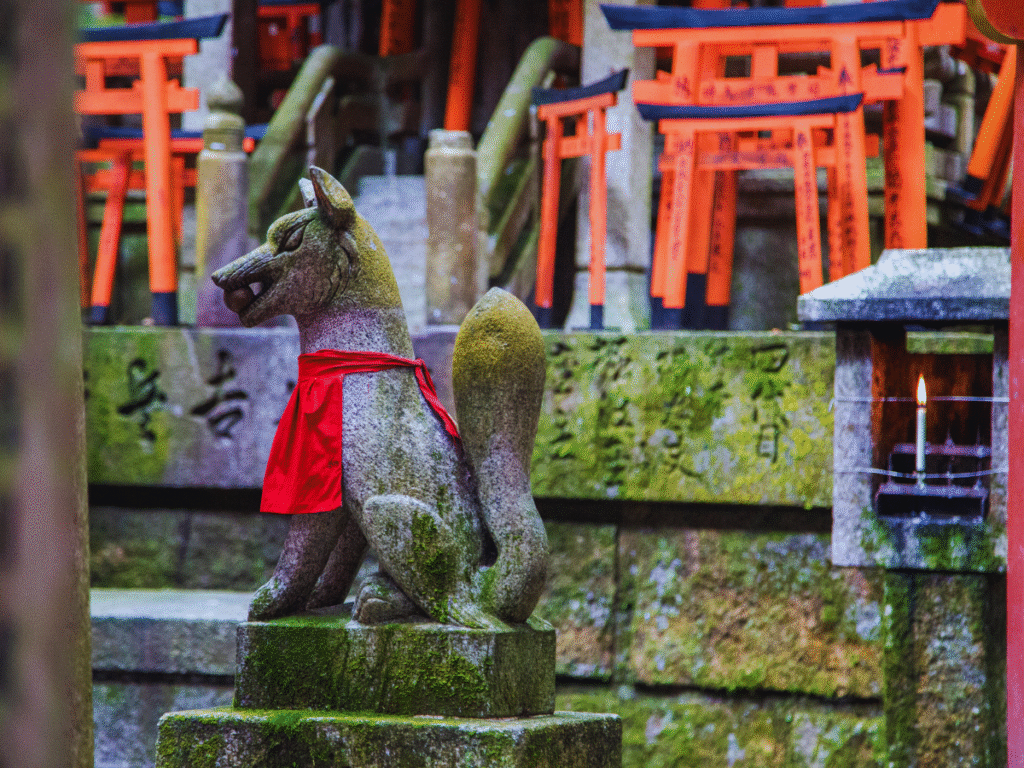
Enjoy the view and the walk until you reach at least Okusha Shrine, and then the path will be less crowded and better for pictures. This quieter Shrine is often overlooked, but it holds a special charm and more unique sacred items for you to look at. It also has the most adorable and unique-looking Ema, which is the face of a fox.
While you cannot take these home with you, you can draw their face in any style you like, and adorn the shrine with your own little fox while also asking for a wish! This ema is not only popular with kids but also adults, so anyone can unleash their inner artist here!
Here, you’ll also find a fascinating object called the Omokaru Ishi—literally the “heavy-light stone.” The ritual around this stone is simple but surprisingly telling: you leave a coin, make a wish, lift the stone, and if it feels lighter than expected, your wish is said to come true. If it feels heavier… well, perhaps it’s a sign to be patient or try harder.
Watching visitors react to the stone—laughing, gasping, sometimes shaking their heads in disbelief—is one of the small joys of being in this space, even if you do not wish to try it yourself!
Kumataka Shrine

Once you’ve tested your strength and art skills, you can keep going through the corridor, heading to the path that will give you the best shots and lead you to one of the most powerful shrines that sleep in Inari Mount: Kumataka Shrine.
The crowds thin as you make your way to this srhine. You will know you’ve arrived when you’re faced with steep stairs. The air feels different here—cooler, charged with something ancient. It’s not flashy, and that’s exactly the point. Kumataka Shrine offers a chance to pause, reflect, and reconnect, amongst many statues of foxes, smaller torii offerings and many moss-covered stone shrines that will suddenly make you wonder if you accidentally time-travelled.
Most shrines on the way up to the top will look very similar to this one, so after you’ve taken in the quieter atmosphere of this area and stocked up on some more souvenirs in the small shop next to the shrine, you can start going down.
Street Food and Shops
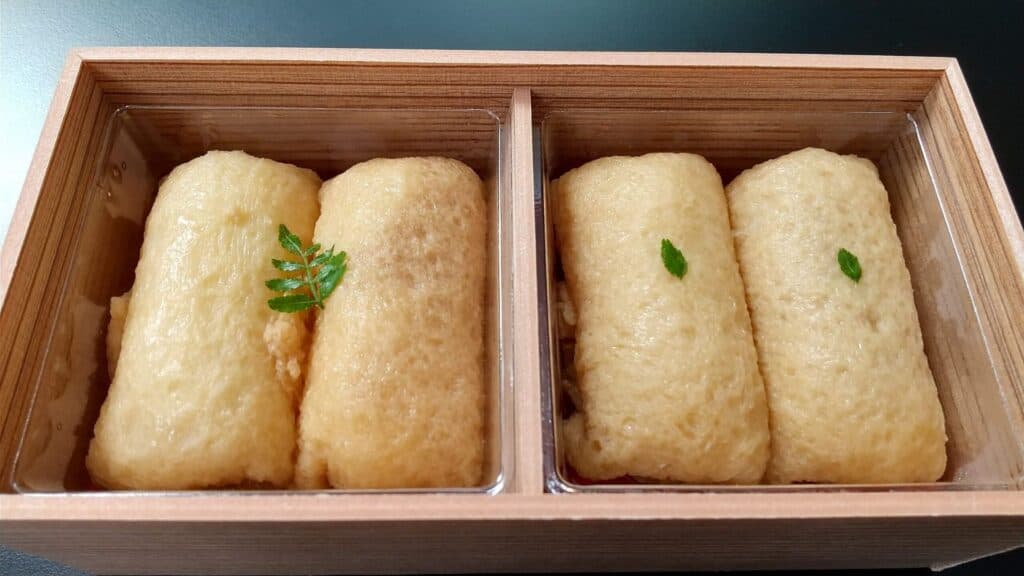
While your visit will be over once you get back to the main shrine after you go down, there is still more to see and to eat! You will likely work up an appetite even if you do not climb all the way up, so make sure you try some street food at the food stalls right outside the east exit of the shrine. Inari sushi—rice wrapped in sweet fried tofu, said to be a favourite offering to the fox spirits, is another must.
You’ll also find yakitori, grilled mochi skewers, and sweet treats like yatsuhashi (Kyoto’s famous mochi sweets) and matcha ice cream. If you’d like a proper sit-down lunch, there are a handful of simple restaurants nearby serving soba and udon noodles, often with tofu or tempura.
Visiting During the Night

Before you even consider visiting Fushimi Inari during sundown or nighttime, please keep in mind that while this Shrine is open 24 hours and it is possible to hike all the way up after the shrine’s stores and services close, it is dangerous to do so without proper preparation.
Make sure that you’re wearing at least comfortable shoes, and carrying a flashlight, or a fully charged phone (and a power bank, just in case). Most shops and restaurants on the way up close before 5 PM, so take snacks and drinks with you, or cash to use on the vending machines (these sell mostly drinks).
There is a convenience store (Open from 6 AM to 12 AM) right by the JR Inari Station, so you can stock up on food and drinks there before you begin your visit.
While the hike during the nighttime certainly has its perks (no crowds, no summer heat to drain your strength, and a mystical atmosphere), the path is not lit up to perfection, so some areas might be darker than others, and with so many stairs, it’s easy to slip. Especially on days when the moon is shining, the moonlight can make the steps look wider, steeper, or different, which makes it a lot easier to miss a step and get hurt.

But if you watch your step, gear properly, and stay alert, you will get a glimpse of a mysterious and much different aspect of Fushimi Inari. The lack of visitors will allow you to listen to the nature enveloping the path; after all, the Shrine is located in a Mountain, so night time enhances the connection that Shinto Shrines have with the trees and rivers.
Once you get to the Shrines, you might find some visitors praying, paying respects, or simply enjoying the peaceful atmosphere of the place. Some locals also like to hike Mount Inari during the night, so you will likely find a couple of them running up or down the paths.
One more thing to be aware of is that there are wild monkeys and wild boars living in Mt Inari, so read up in advance about how to keep yourself safe when encountering these lovely creatures in the wild!
If you’re planning a visit during nighttime, don’t forget to check the times of the last trains so that you don’t have to take an expensive taxi back to where you’re staying!
A Shrine with History and Beauty
Fushimi Inari Taisha isn’t just a beautiful place—it’s a space for movement, reflection, and connection with a side of Japan that many visitors don’t get to experience fully. Whether you go for the hike, the history, or the fox folklore, you’ll leave with something quietly lasting (aside from sore legs, should you choose to hike it all the way up).
And next time someone shows you a photo of those red gates, you’ll remember the sounds, the scents, and the soft rustle of wind through leaves that made your own walk through them so unforgettable.
If you want to get the most out of your visit to Fushimi Inari while also checking out other relevant spots in Kyoto, check out our tours, as we have both private and group tours you can book to better suit the adventure you’re looking for!



